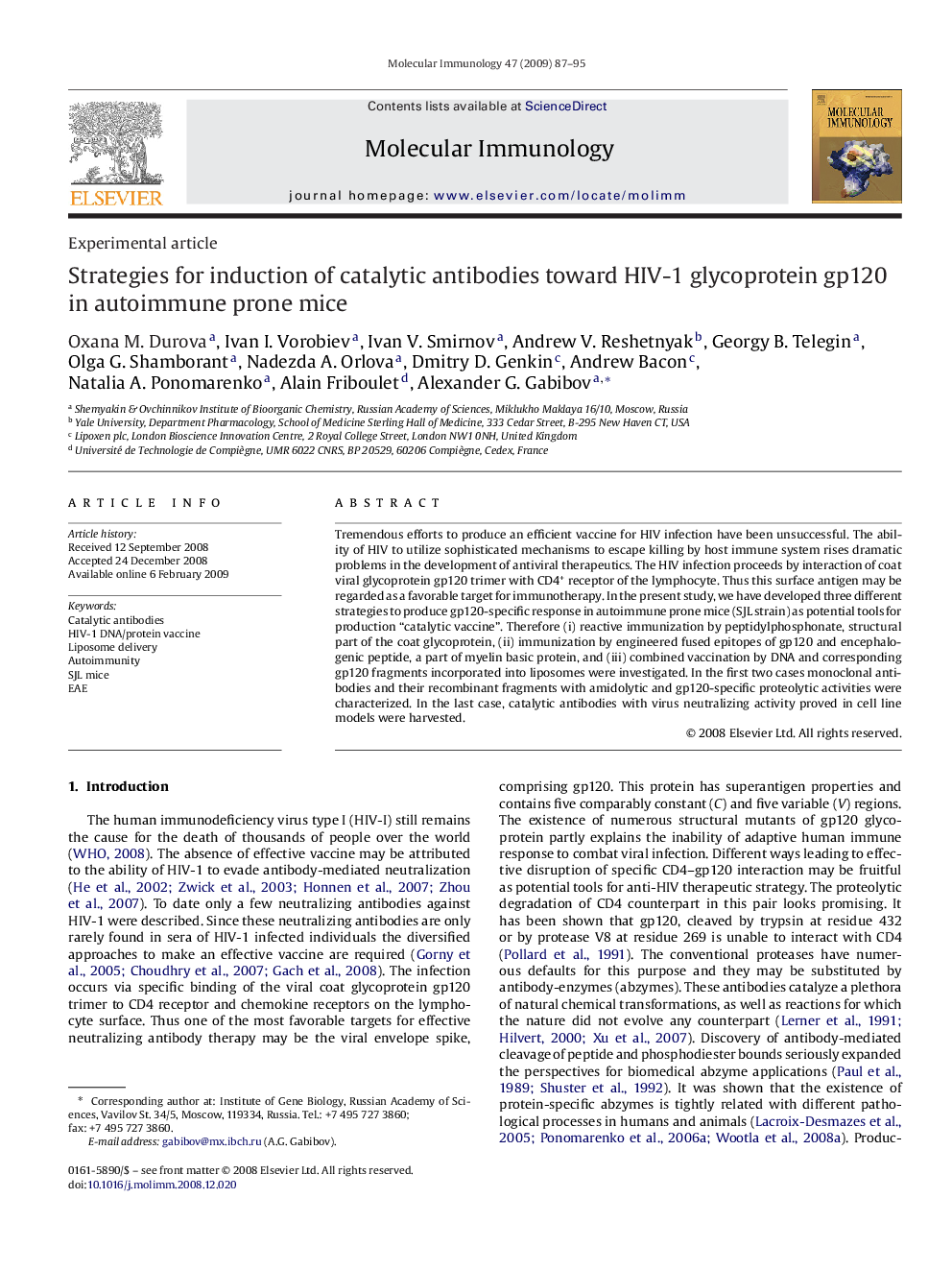| Article ID | Journal | Published Year | Pages | File Type |
|---|---|---|---|---|
| 2831373 | Molecular Immunology | 2009 | 9 Pages |
Tremendous efforts to produce an efficient vaccine for HIV infection have been unsuccessful. The ability of HIV to utilize sophisticated mechanisms to escape killing by host immune system rises dramatic problems in the development of antiviral therapeutics. The HIV infection proceeds by interaction of coat viral glycoprotein gp120 trimer with CD4+ receptor of the lymphocyte. Thus this surface antigen may be regarded as a favorable target for immunotherapy. In the present study, we have developed three different strategies to produce gp120-specific response in autoimmune prone mice (SJL strain) as potential tools for production “catalytic vaccine”. Therefore (i) reactive immunization by peptidylphosphonate, structural part of the coat glycoprotein, (ii) immunization by engineered fused epitopes of gp120 and encephalogenic peptide, a part of myelin basic protein, and (iii) combined vaccination by DNA and corresponding gp120 fragments incorporated into liposomes were investigated. In the first two cases monoclonal antibodies and their recombinant fragments with amidolytic and gp120-specific proteolytic activities were characterized. In the last case, catalytic antibodies with virus neutralizing activity proved in cell line models were harvested.
